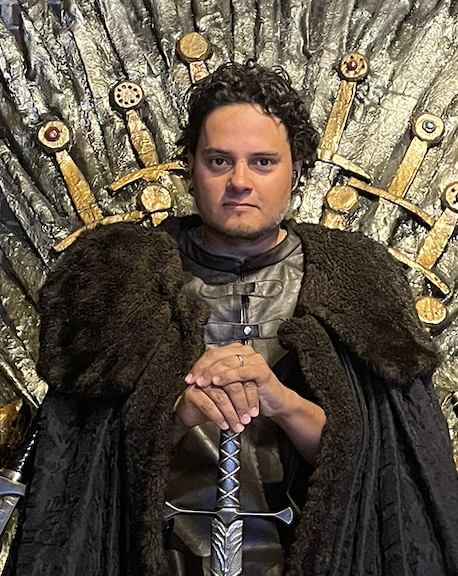Open any fantasy novel, and you’ll probably find a dragon somewhere in the shadows. Maybe it’s guarding treasure in a mountain cave. Maybe it’s soaring above a ruined city. Or maybe it’s offering cryptic advice to a young, reluctant hero. Wherever it appears, the dragon is one of fantasy’s most enduring tropes.
But where did it come from? Why are readers so drawn to these fire-breathing beasts? And how did we go from ancient snake monsters to intelligent, speaking dragons with moral codes and magical powers?
Let’s dive into the myth, the medieval, and the modern evolution of dragons in fantasy.
The Earliest Dragons Were Basically Giant Snakes
The dragon, as we know it today, wasn’t born in fantasy books. It slithered out of ancient mythology.
The very word “dragon” comes from the Greek drákōn (δράκων), which meant “serpent.” And not the cute garden variety. These were massive, dangerous, often divine creatures.
Greek myths are full of serpent-like monsters:
- Ladon, a many-headed dragon who guarded the golden apples in the Garden of the Hesperides.
- Typhon, a monstrous creature with serpent legs who fought Zeus in a battle for cosmic control.
- The Python, slain by Apollo, which lived in the sacred caves at Delphi.
These early “dragons” weren’t winged or fire-breathing. They were more like cosmic snakes, dangerous because they were ancient, powerful, and sometimes immortal.
The Dragon Evolves: From Serpent to Winged Beast
So how did we get from slithering snakes to the winged, fire-breathing creatures we see today?
That transformation started during the medieval period, where dragons became a mash-up of earlier myths, folk monsters, and religious symbolism. European folklore added bat-like wings, limbs, and flaming breath. Christianity added something else: evil.
In medieval Europe, dragons became icons of sin, greed, and chaos. You’ve probably heard of Saint George and the Dragon—a holy knight slaying a monstrous beast to save a village (and a princess). That story, popularized in the 11th–14th centuries, helped cement the idea of the dragon as a symbol of Satanic evil or worldly corruption.
At the same time, dragons began appearing in bestiaries, medieval books cataloguing animals, both real and imagined. These texts gave dragons hoards, lairs, and a love of treasure.
Suddenly, dragons weren’t just monsters. They were obstacles. They guarded something. And if a hero wanted to prove himself, slaying one became the ultimate test.
Tolkien Gave Us the Modern Fantasy Dragon
Fast forward to the 20th century. Dragons had already appeared in myths, legends, folktales, and religious texts. But it was J.R.R. Tolkien, more than anyone else, who shaped the modern fantasy dragon.
In The Hobbit (1937), Tolkien introduces Smaug—a gold-hoarding, cunning, fire-breathing dragon who speaks with intelligence and sarcasm. Smaug is more than just a beast. He’s a character. A villain. A force of corruption.
Tolkien’s dragons in The Silmarillion go even further, introducing wingless fire-drakes, ice-dragons, and ancient monsters like Glaurung. His work became the blueprint for dragons in high fantasy: massive, ancient, intelligent, and terrifying.
From there, dragons spread everywhere:
- Dungeons & Dragons gave us color-coded dragons with moral alignments.
- Anne McCaffrey’s Dragonriders of Pern turned dragons into psychic, telepathic companions.
- George R.R. Martin’s A Song of Ice and Fire reimagined dragons as weapons of mass destruction—and symbols of rebirth and conquest.
- Christopher Paolini’s Eragon gave us a dragon-human bond with magical depth.
Every author added their own twist, but they all pulled from the same mythic DNA.
Why Dragons Still Work (and Always Will)
So why do we keep coming back to dragons?
Because dragons do everything a fantasy reader wants. They’re:
- Visually dramatic — massive, winged, fire-breathing beasts look amazing in our minds (and on covers).
- Symbolically powerful — they represent greed, chaos, ancient wisdom, or cosmic balance depending on the story.
- Flexible in role — they can be villains, allies, mentors, or forces of nature.
- Mythically loaded — when a dragon shows up, it feels important. Like the story just leveled up.
They also come with built-in stakes. You don’t fight a dragon for fun. You do it because your kingdom depends on it. Or because the dragon’s guarding something you need. Or because you need to prove yourself. Every dragon encounter is a test, not just of strength, but of character.
And more recently, dragons have become a symbol of power with complexity. They’re not just there to be slain. Sometimes they’re smarter than the humans trying to control them. Sometimes, they’re the ones being hunted.
The Dragon Isn’t Going Anywhere
The dragon trope has lasted thousands of years for a reason. It taps into something primal: fear, awe, ambition, and transformation.
Whether we’re reading about knights on quests, rogues stealing from lairs, or bonded riders soaring through the skies, dragons make everything feel more epic.
So the next time you spot a dragon on the cover of a book, don’t roll your eyes. Lean in. You’re not just getting a monster, you’re stepping into one of the oldest and richest traditions in fantasy storytelling.
And chances are, something important is hiding behind those wings.

D.P. Martinez is a contemporary fantasy author specialising in urban fantasy and magical realism. He holds an M.A. in English Literature from the University of Greenwich, where he focused on Literary London. His research explored metaphorical representations of London in urban fantasy. He has written hundreds of articles and several books across both fiction and non-fiction.

